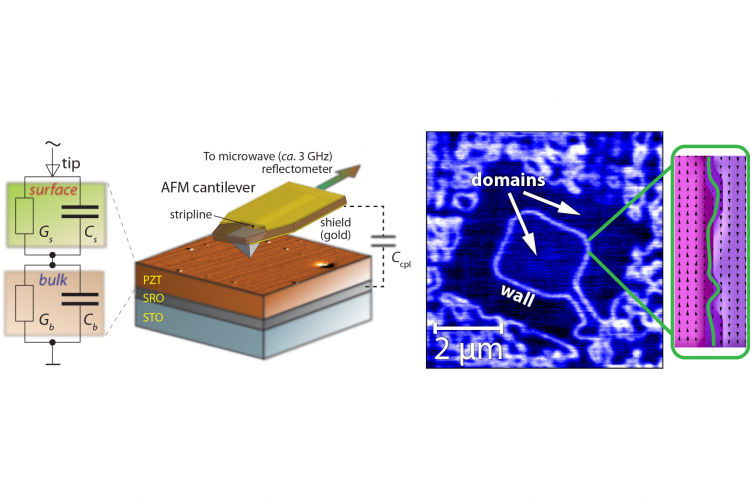Microwave microscopy of ferroelectric domains
Research led by Oak Ridge National Laboratory explored building blocks of future electronics — ferroelectric materials in which topological defects called domain walls can be created by an electric field and detected by an alternating current. The study led by Alexander Tselev, Sergei Kalinin and Petro Maksymovych of the Center for Nanophase Materials Sciences, a DOE Office of Science User Facility at ORNL, found that domain walls in two ferroelectric oxides were great electrical conductors at microwave frequencies, despite being insulators for direct current. In fact, their alternating current conductivity rivaled that of doped silicon. “These findings motivate the potential for alternating current conduction for oxide electronics and other materials with poor direct current conductivity, particularly at the nanoscale,” noted Maksymovych.

Microwave imaging (left) reveals conducting ferroelectric domain walls (right) in lead zirconate titanate. Before microwave microscopy, it was difficult to detect electrically conducting ferroelectric domains. Measurements also suggest the “rough” shape of these walls, indicated with dotted lines in the inset (far right), enables the alternating current conductivity.
ORNL
Original publication
Other news from the department science

Get the analytics and lab tech industry in your inbox
By submitting this form you agree that LUMITOS AG will send you the newsletter(s) selected above by email. Your data will not be passed on to third parties. Your data will be stored and processed in accordance with our data protection regulations. LUMITOS may contact you by email for the purpose of advertising or market and opinion surveys. You can revoke your consent at any time without giving reasons to LUMITOS AG, Ernst-Augustin-Str. 2, 12489 Berlin, Germany or by e-mail at revoke@lumitos.com with effect for the future. In addition, each email contains a link to unsubscribe from the corresponding newsletter.


















































